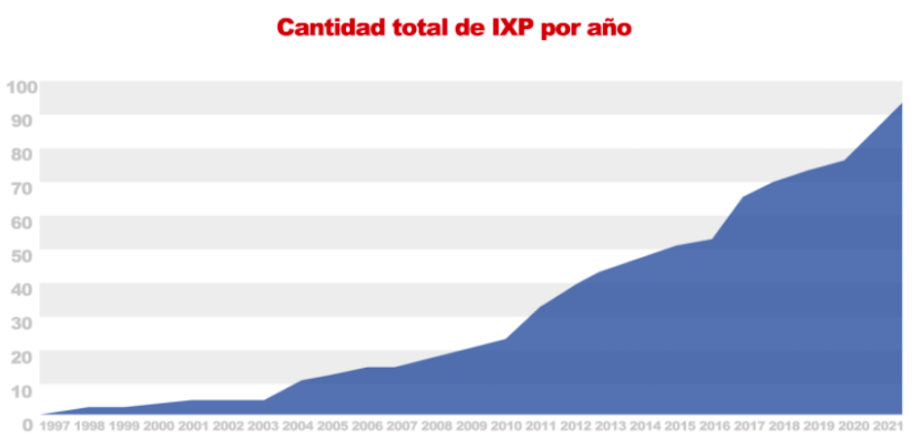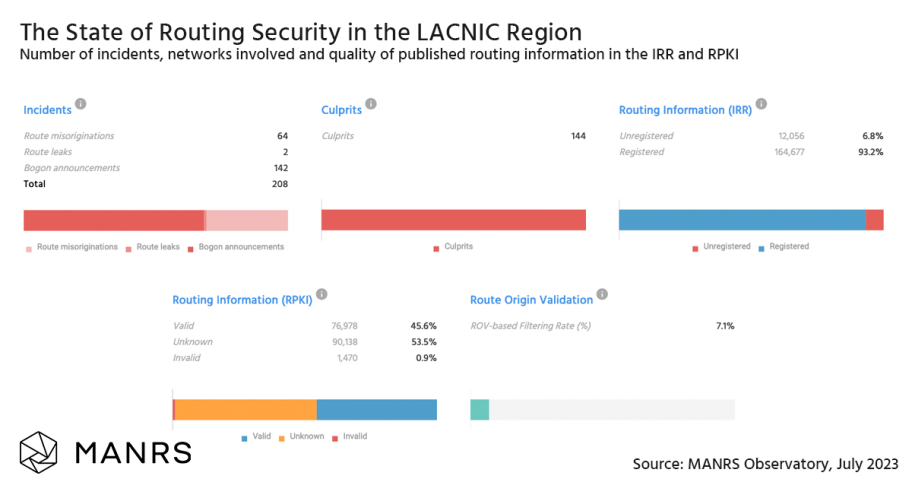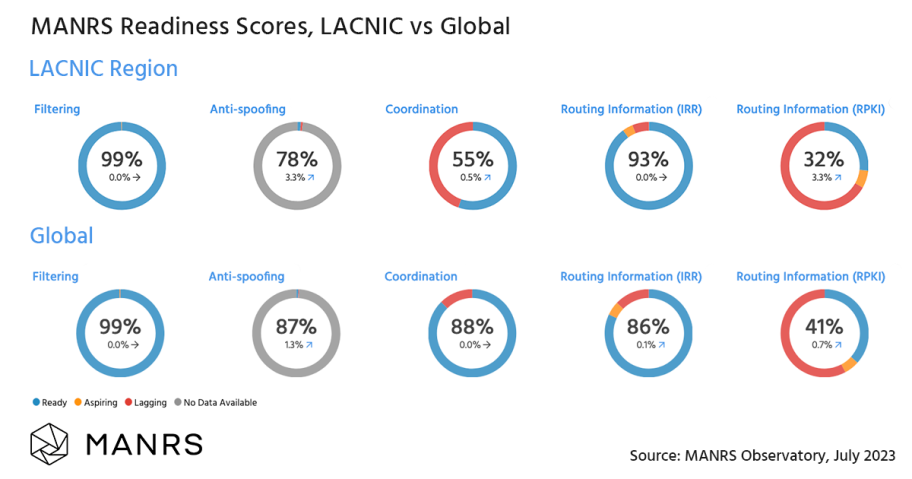Routing Security is a Top Priority for LAC IXPs
Earlier this year, my colleague, Olaf Kolkman, summarized an Internet Society project that sought to understand whether the “classic” Internet is still relevant. The premise of the research was that the evolution of edge services has reshaped the way data flows through the Internet.
A portion of this transformation is linked to the decline in transit services, which is linked to the expansion of the peering network sought by several network operators that join Internet Exchange Points (IXPs). A similar trend is happening in relation to how Content Delivery Networks (CDNs) are expanding their peering relations also by partnering with IXPs.
Both of these topics were discussed during the 2023 Latin America and Caribbean (LAC) Peering Forum, held earlier this year during LACNIC 39 in Mexico, and goes some way to explain the sustained growth witnessed by the IXP ecosystem in the LAC region. A LAC-IX study, supported by the Internet Society and LACNIC, showed that 98 IXP sites were active in the region as of August 2021 — a 44% increase from 2016.

LAC-IX has played a major role in not only establishing and supporting the growth of IXPs in the region but also facilitating the exchange of experiences and best practices among members. One example of this is a business case it recently developed for CABASE, the organization in charge of the IXPs in Argentina and one of LAC-IX’s biggest members, which offered insights on why IXPs matter beyond peering exchanges, such as routing security.
For instance, 50% of IXPs in the LAC region have enabled RPKI validation and IRR filtering, key components for any IXP willing to join the MANRS initiative. What is more, out of 25 current LAC-IX members, almost 70% of them are ready to join or have already joined the MANRS IXP Program.


A conversation with Mauricio Oviedo, LAC-IX Technical Manager, and a 2022 MANRS Ambassador, reveals that the numbers are not a coincidence. “Having routing security in mind when you’re planning to build an IXP makes it easier to implement MANRS actions once the IXP is fully operative,” said Oviedo.
The Costa Rica-based engineer also explains how a technical group within LAC-IX has paved the way for their members’ readiness. “By building a successful and replicable model, IXPs are better positioned to join MANRS and identify the actions needed to fill real or perceived gaps,” said Oviedo. “This approach has allowed them to adhere to best practices in routing security and other topics.”
If the average of six new IXPs per year is maintained in the LAC region, designing all of them with a MANRS-readiness perspective will be crucial at a time when routing security is at the top of policymakers’ and regulators’ priorities. There’s no better time to lead by example.
Leave a Comment